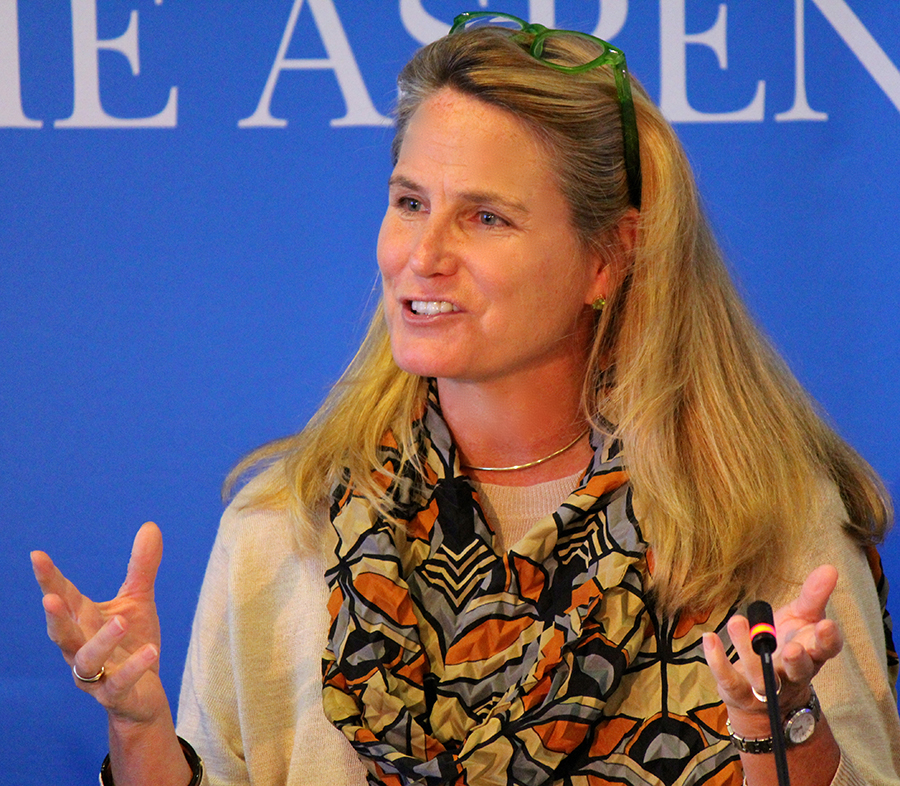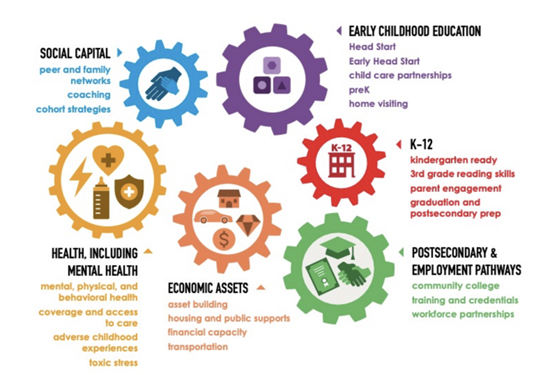By Anne Mosle, Vice President, Aspen Institute. Originally published in the Fall 2022 issue of Kansas Child Magazine.
Over the past few years, the impact of COVID and record inflation rates — combined with systemic inequities and fragmented systems — have exacerbated stress and instability for children, parents, and caregivers. Children and families of color and those with low incomes continue to be the hardest hit. According to a 2020 study, nearly half of families earning less than $40,000 per year reported that they or someone in their household lost a job or took a pay cut as a result of the pandemic.
We now have a generational opportunity to develop and fund systems and services that leave no one out and meet children and families where they dream.
We are witnessing a sea change in early childhood, with providers and systems leaders embracing more holistic approaches to improving the health, learning, and well-being of our youngest children and their families.
To meet this moment, states and communities should apply and accelerate two-generation (2Gen) approaches to build on the resilience of families, including parents’ aspirations for themselves and their children.
What is a 2Gen Approach?
Aimed at driving effective, equitable, and sustainable outcomes, 2Gen approaches are rooted in both a mindset shift and new vision for the future of leadership. At Ascend at the Aspen Institute, we’ve been working with leaders in communities across the country for a decade to spark and spread these approaches.
2Gen approaches build family well-being by intentionally and simultaneously working with children and the adults in their lives.
Designing health and human services programs to support children and families together improves outcomes for both generations. When everyone achieves their full potential, communities thrive.
As children, parents, and families grow and change across their lifespans, 2Gen approaches help families pursue their goals and thrive, optimizing each individual’s potential along the way. Take the example of a father pursuing a licensed professional nurse (LPN) degree or a mother pursuing an IT credential. If that parent qualifies for a state or federal tuition grant, access to high-quality child care ensures that, while the parent is studying, the child is learning, too.
You can see 2Gen approaches in action at organizations like Jeremiah Program, a Minnesota-based nonprofit that is part of the Ascend Network and that works with single mothers and their children to disrupt the cycle of intergenerational poverty. CEO Chastity Lord believes that “when a mother invests simultaneously in her personal and professional goals and the education of her children, she can re-author her family’s outcomes and act as a change agent within her community.”
The Role of Early Childhood Development
A 2Gen approach is especially beneficial for young parents and their children. The earliest months and years of life are a period of incredible brain development. The brains of new parents change, too — creating a profound window of opportunity for practice and policy interventions.
Investing in these early years is a key part of 2Gen approaches, and for good reason: one study found a high-quality early education yields a 13% return on investment per year (based on increased school and career achievement, as well as reduced social costs).
In the past decade, we’ve seen the early childhood field embrace 2Gen approaches, from Georgia’s advances in cross-agency child data systems to Colorado’s newly minted Department of Early Childhood. States, counties, and municipalities are proving to be crucial incubators for 2Gen approaches that can be scaled to other parts of the country. Kansas can be next to join the movement.
Investing in Early Childhood Leaders
Our 2022 report, “Toward A More Equitable Tomorrow: Landscape Analysis of Early Childhood Leadership,” found that — to achieve better outcomes for young children and their families — our definition of leadership needs to expand far beyond positional power. We must prioritize building the capacity of leaders at all levels of the early childhood development field in order to:
- Advance racial equity competency and accelerate racial diversity in early childhood leadership
- Think and work collaboratively across systems
- Redefine the economics of early care and learning, with workforce as a priority
- Authentically include parent and caregiver expertise in policy, practice, and systems
- Act as powerful storytellers, narrators, and advocates
- Create conditions that fuel innovation
We need bold leadership that can chart a new future for the early childhood field, one that is grounded in equity and centered in the expertise of families. By investing in the people who will lead the way, we can catalyze economic prosperity, foster a system of radical collaboration, and create a nation that centers children and their families.
Dig Deeper into 2Gen
Check out these reports from Ascend at the Aspen Institute:
- Toward A More Equitable Tomorrow: Early Childhood Leadership Landscape Analysis (2022)
- State of the Field: Two-Generation Approaches To Family Well-Being (2021)
- Gateways to Two Generations: The Potential for Early Childhood Programs and Partnerships to Support Children and Parents Together (2014)
- Two Generations, One Future: Moving Parents and Children Beyond Poverty Together (2012)
-

Anne Mosle
Vice President, Aspen Institute
In addition to her role as vice president, Anne serves as the executive director of Ascend at the Aspen Institute and as co-chair of the Aspen Institute Forum on Women and Girls.






